CO2: Speculative Food Packaging
A redesigned food packaging that visually demonstrate the amount of carbon dioxide emitted during production and transportation.
- Role: Front-end development
- Tools: Photoshop, Illustrator, Vacuum Forming Machine
- Team: Naomi Zhang, Shuangqiao Xia
Agriculture contributes nearly one-quarter of global CO2 emissions. People may think that organic farming not only makes the produce richer in nutrients, but also emits less CO2 compared to conventional farming. However, CO2 is not only emitted during food production, but also during its transportation. Both facts matter for less greenhouse gas emissions.
Our redesign of food package visualize the amount of CO2 emitted during production and transportation. It is designed into 3 variations: organically grown apple transported from 800 miles away; conventionally grown apple transported from medium distance; and locally grown organic apple.
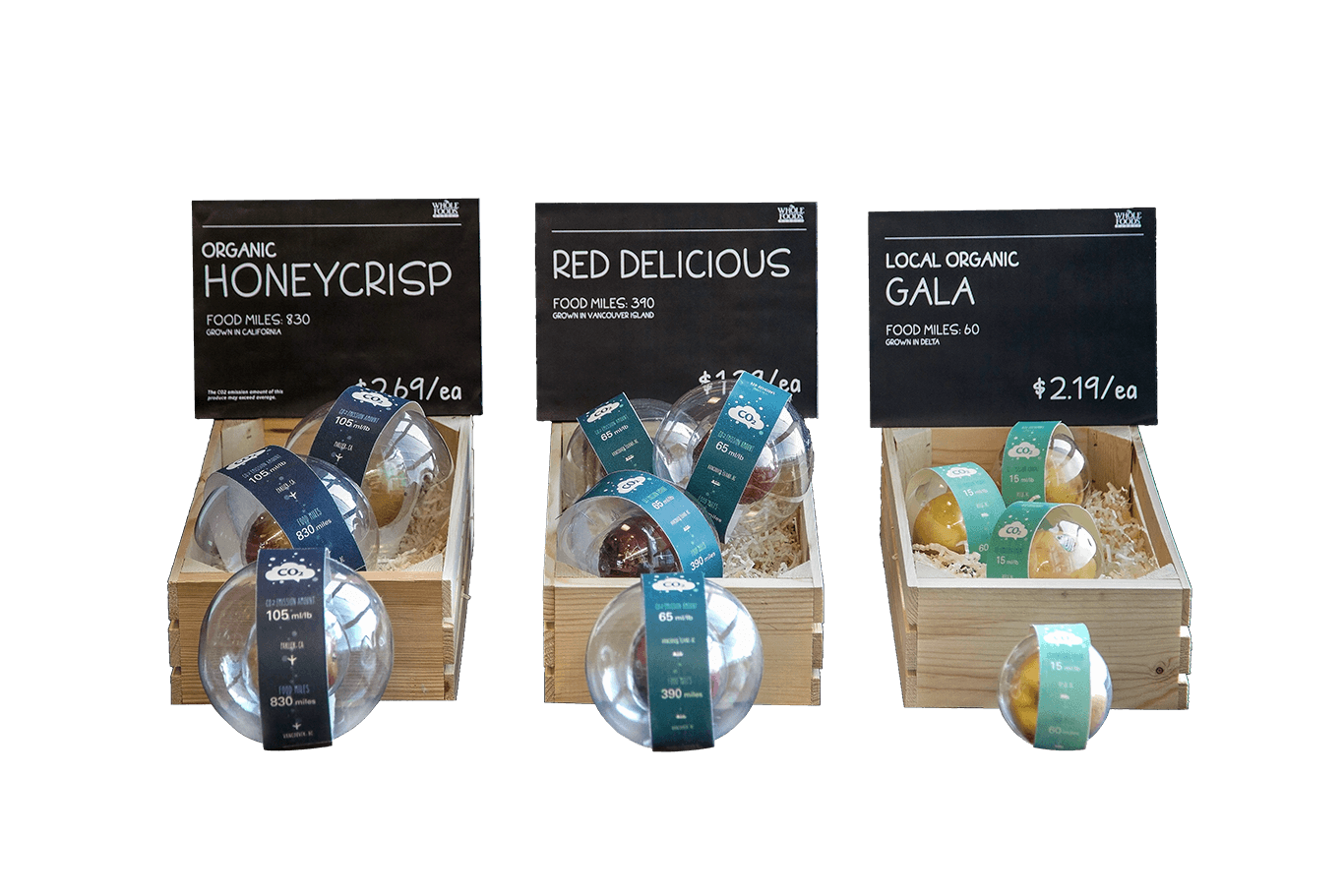
With our redesign, we encourage people to consider environment margin of food besides nutrition and price when purchasing.
Our Design In The News: SFU students re-imagine packaging to showcase food miles
SKETCHING IDEAS
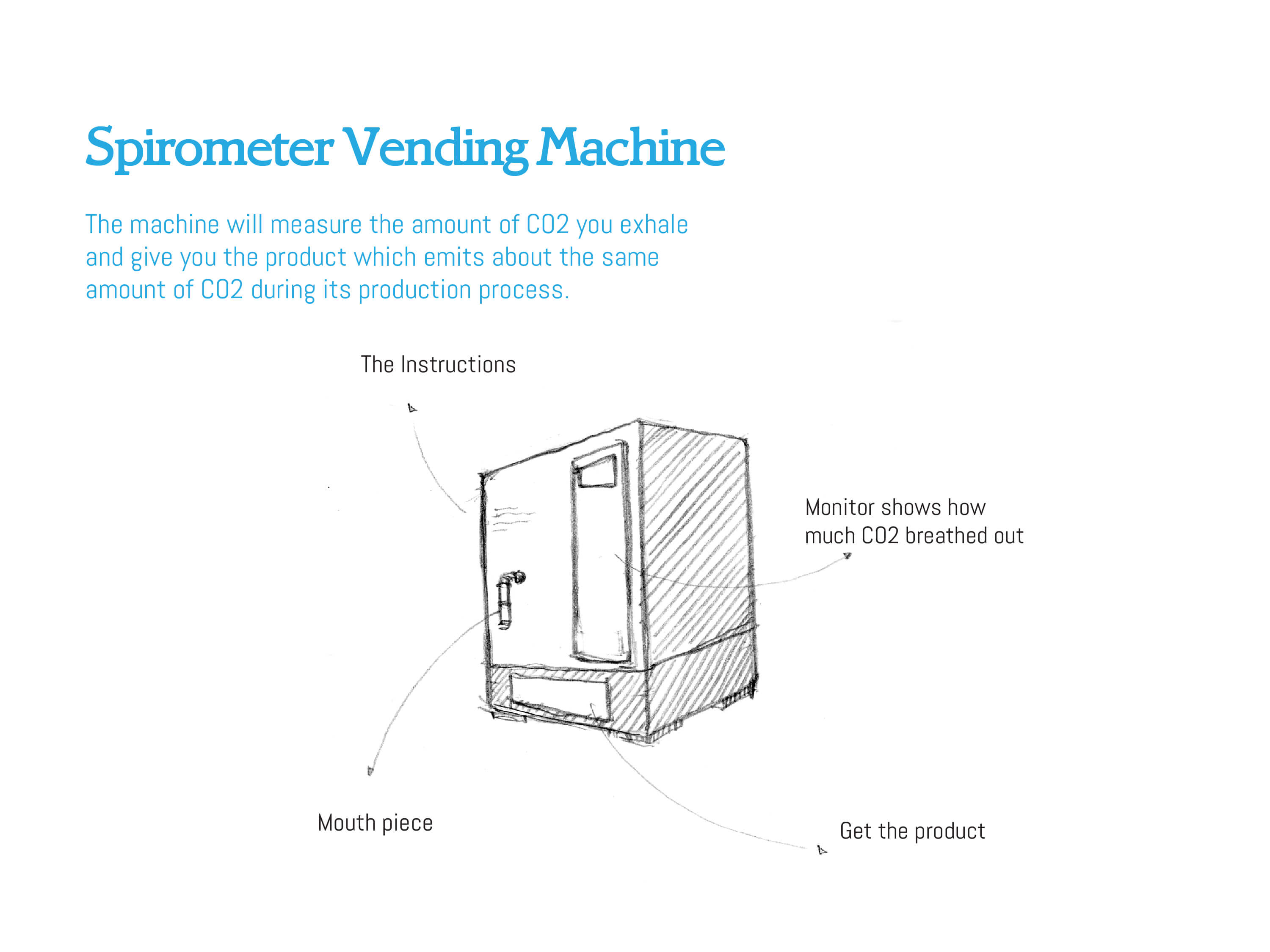
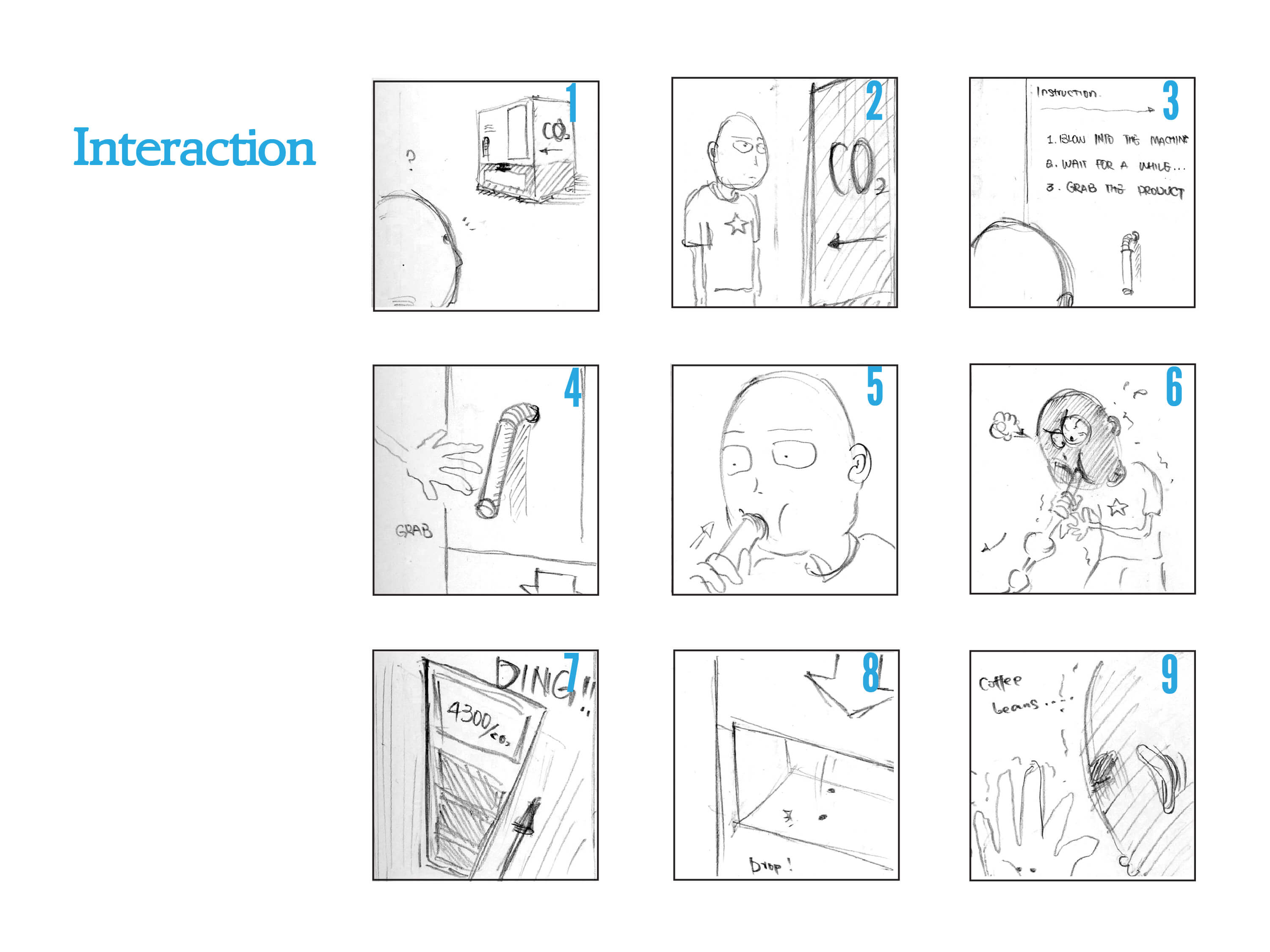
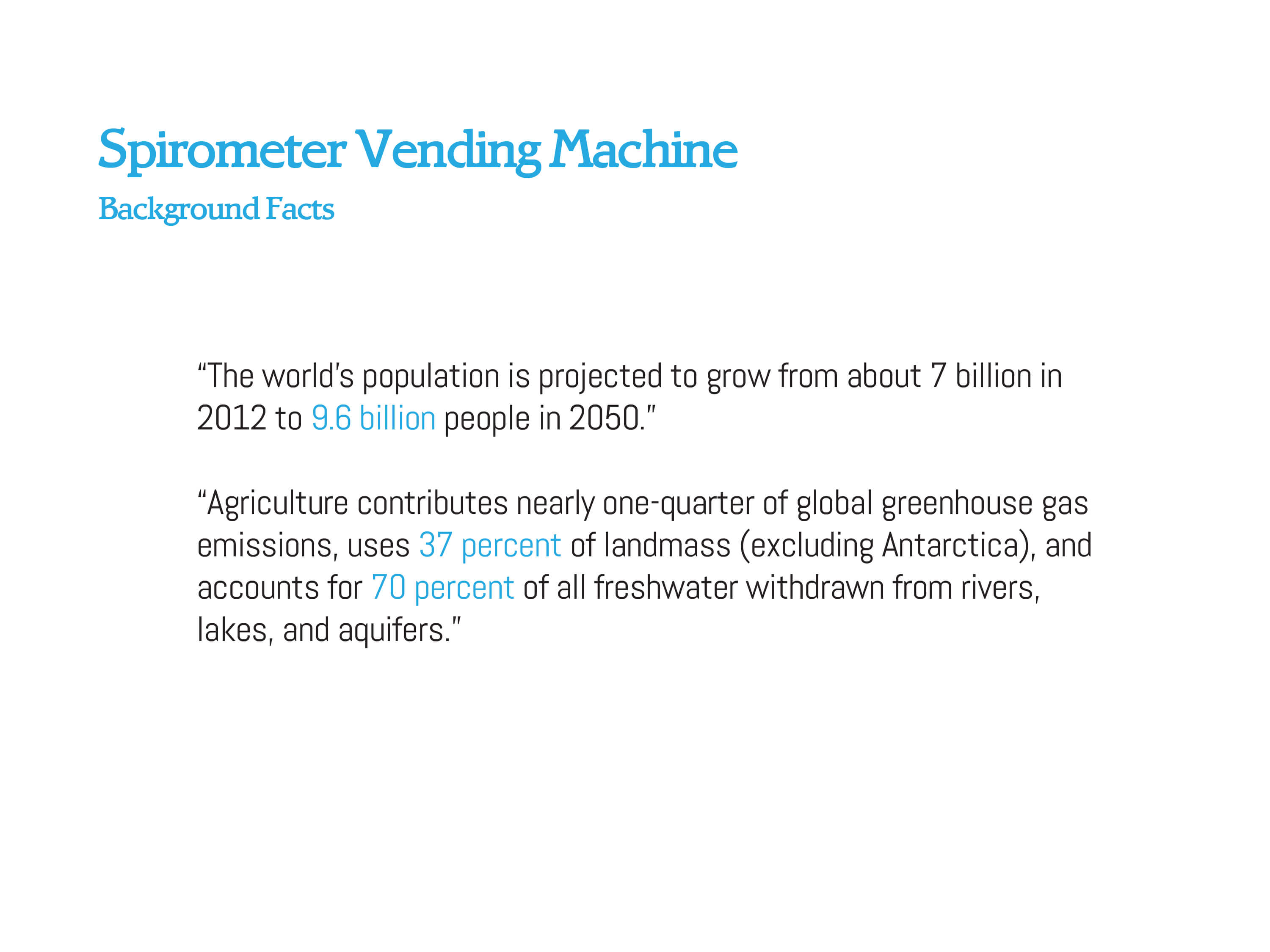
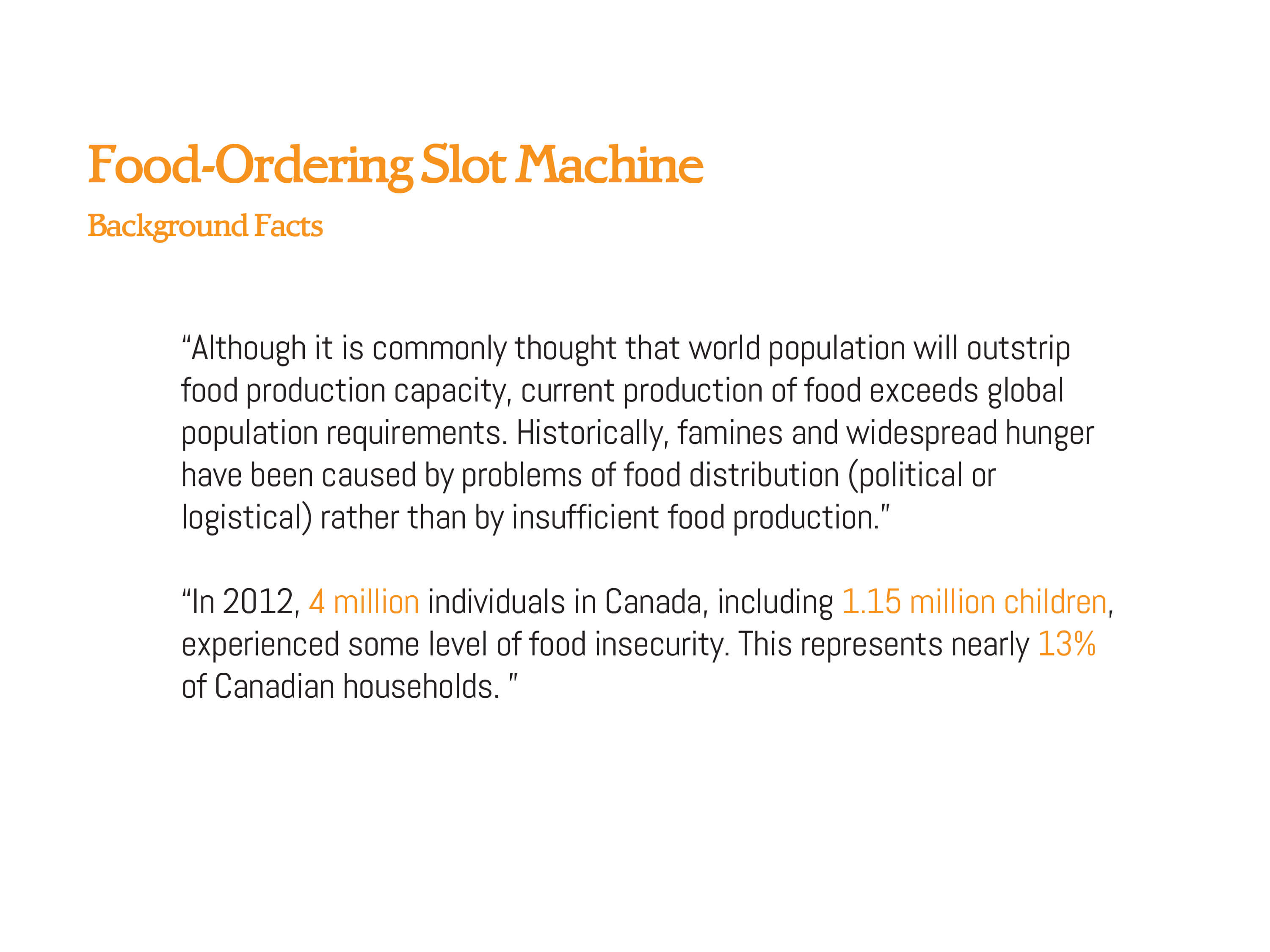
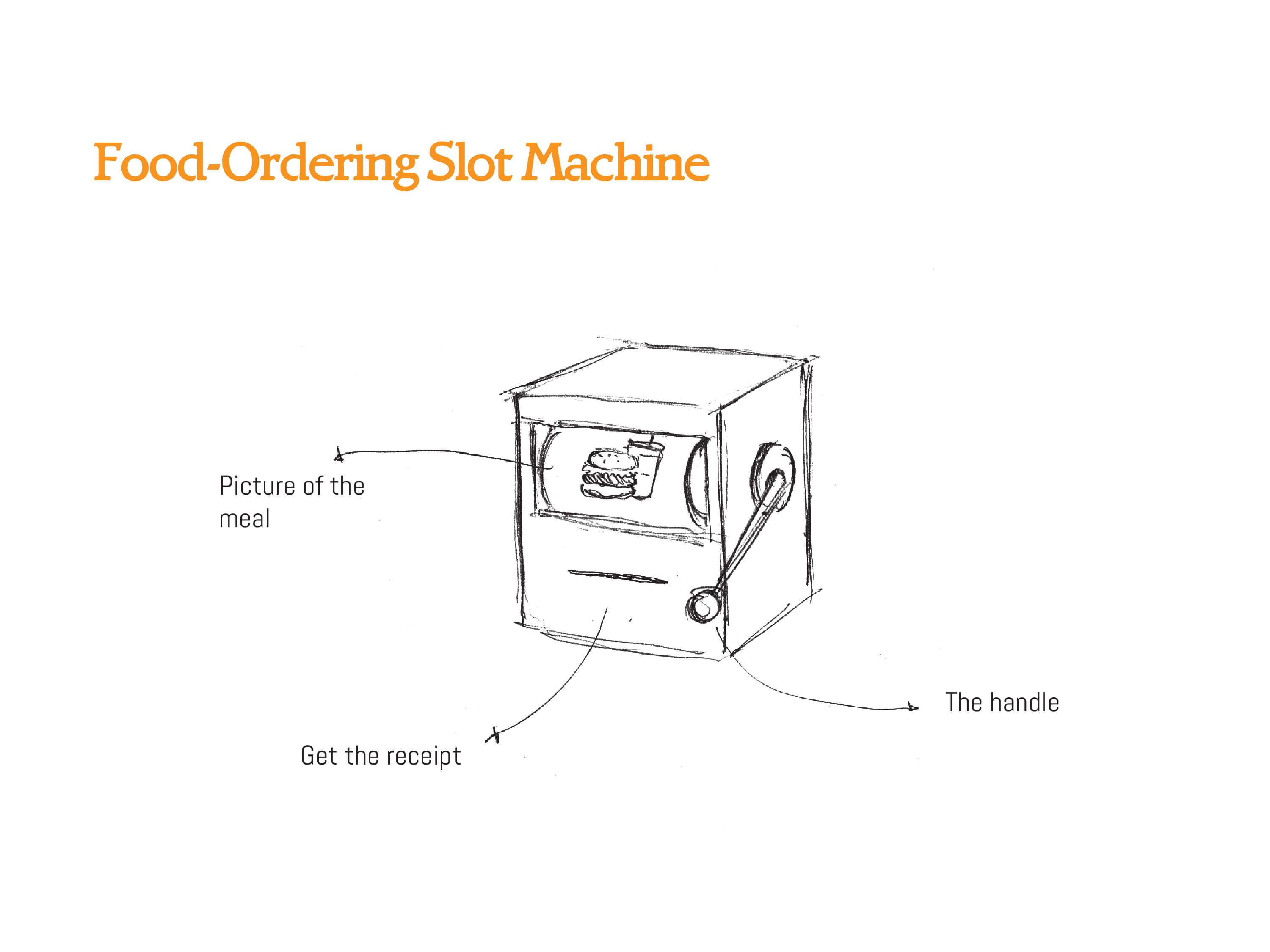
DEVELOPING CONCEPT
From Inspiration: Food package redesign impact consumer's choice
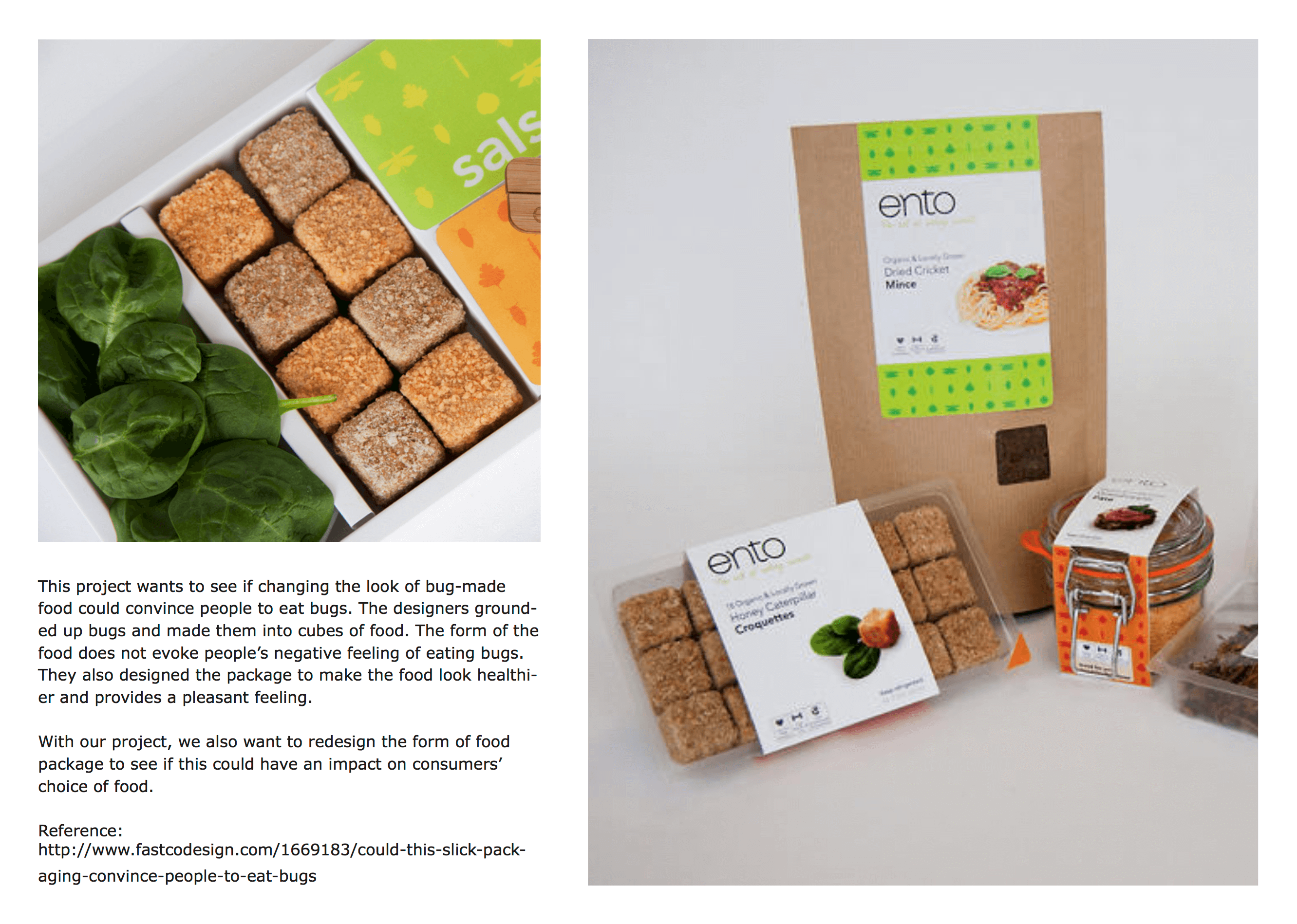
From Research: Calculation of CO2 Emission for one pound of product
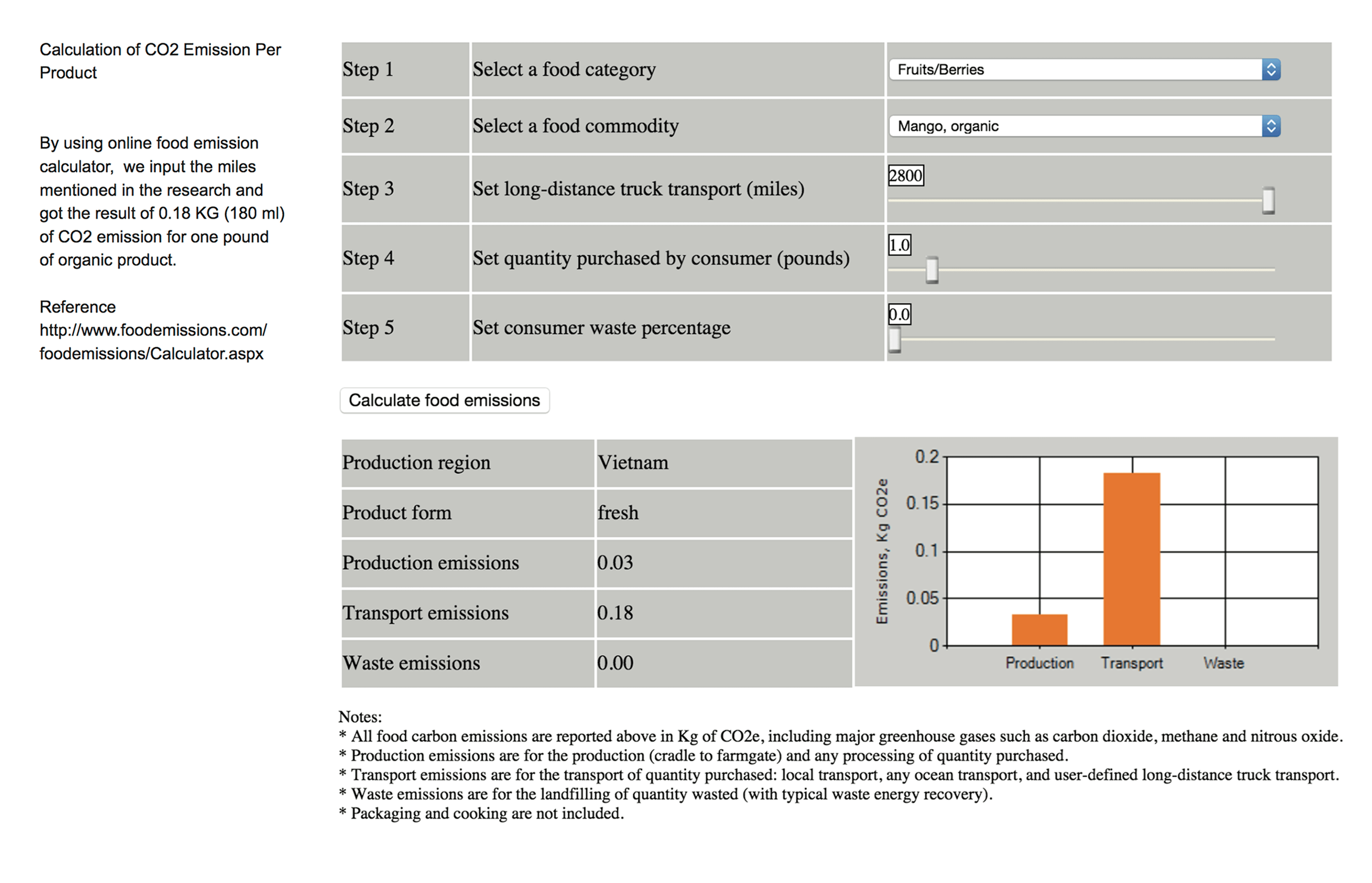
Our Developed Concept: Food package filled with air which equals to the amount of its CO2 emission
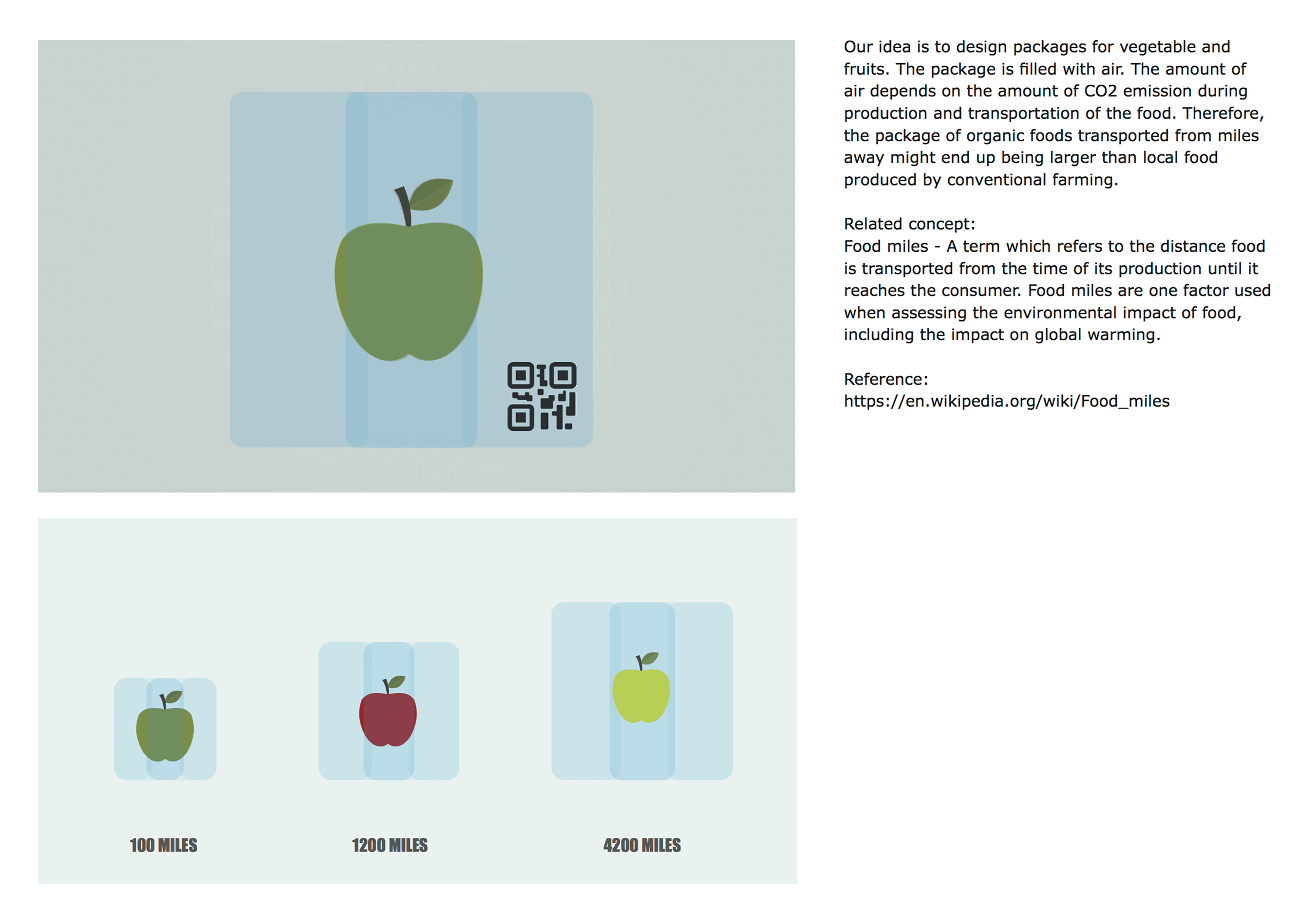
REFINING FORM
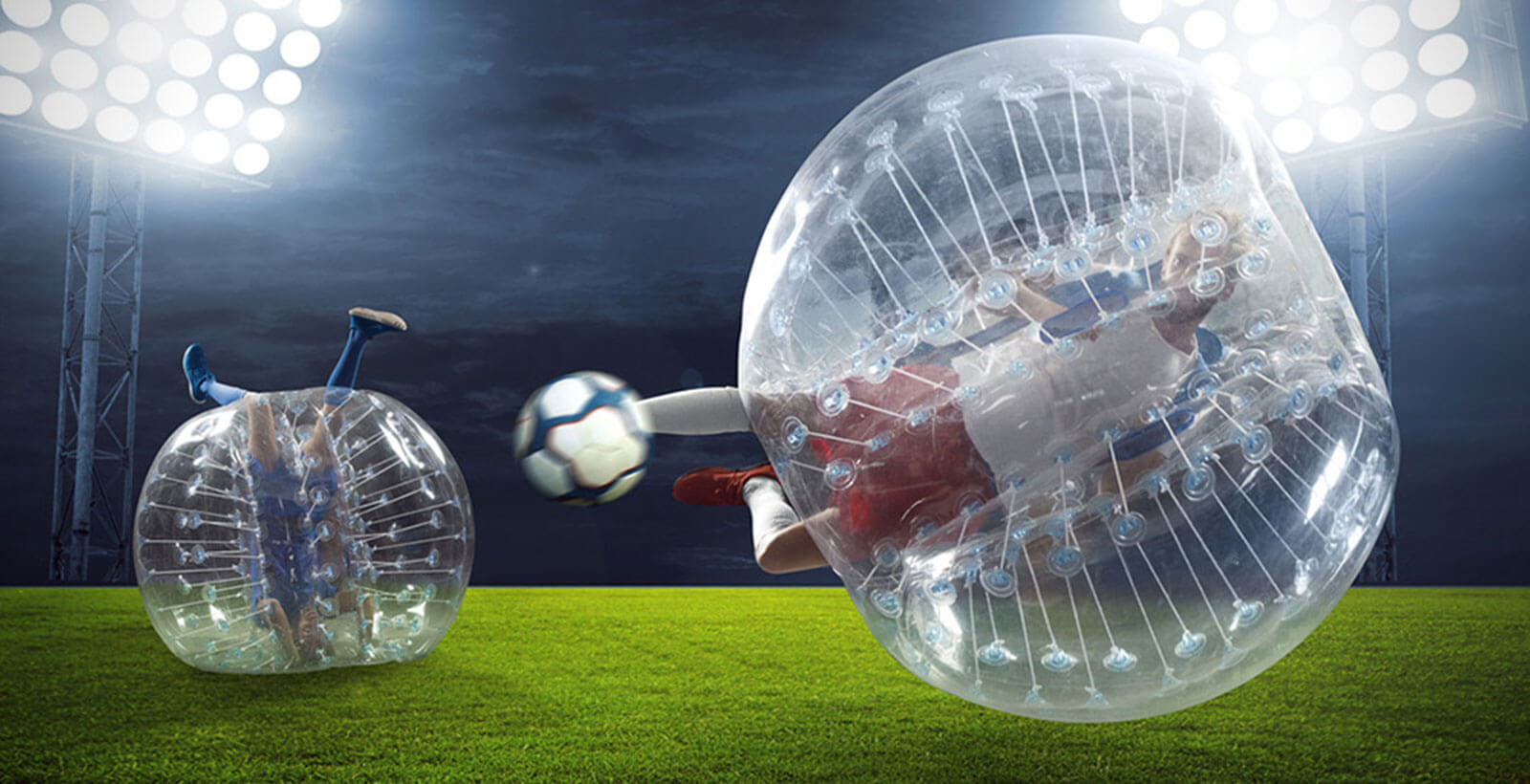
Our Developed Concept: Food package filled with air which equals to the amount of its CO2 emission

EXPLORING METHODS
Double-layer Cushion Air bag
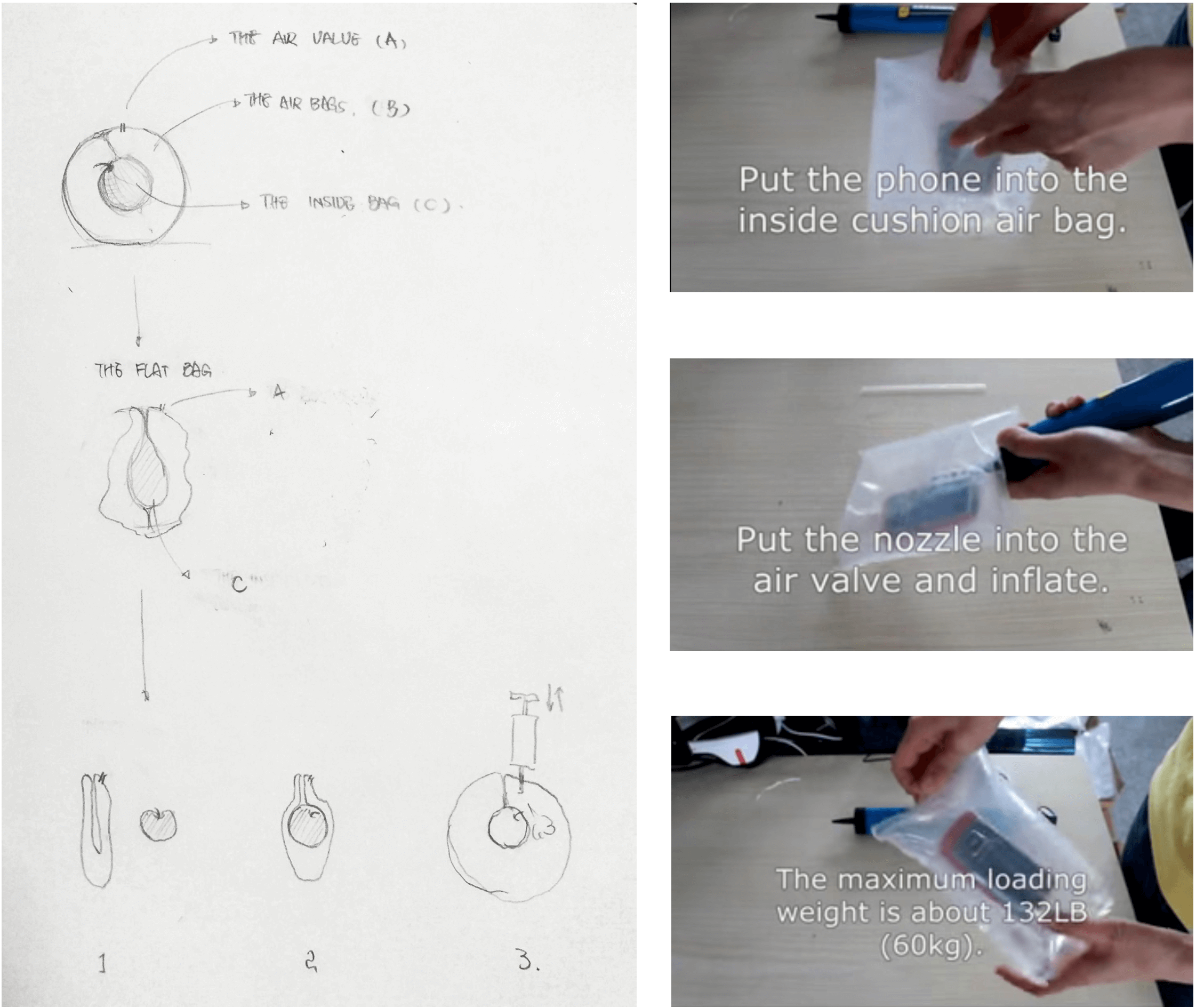
At first we considered to craft a ball-shaped Double-layer Air Cushion Bag as the package. After several experiments, the result was unsatisfying, so this method was scratched.
Vacuum Forming
The first step was to find an object with perfect half-ball shape. Then fill in the plaster, wait until dry and take the shaped plaster out for vacuum forming. After that, heat the PETG plastic sheet until softened. Put the sheet on top of the shaped plaster. And finally, vacuum the air between the sheet and the plaster. It was a tough process to get the perfect temperature and timing of heating PETG sheet. At the same time, because we want to present the prototype in multiple sizes for comparison, we also spent time on finding half-ball-shaped objects in different sizing. The results was satisfying.
DESIGNING FOR SPECULATION
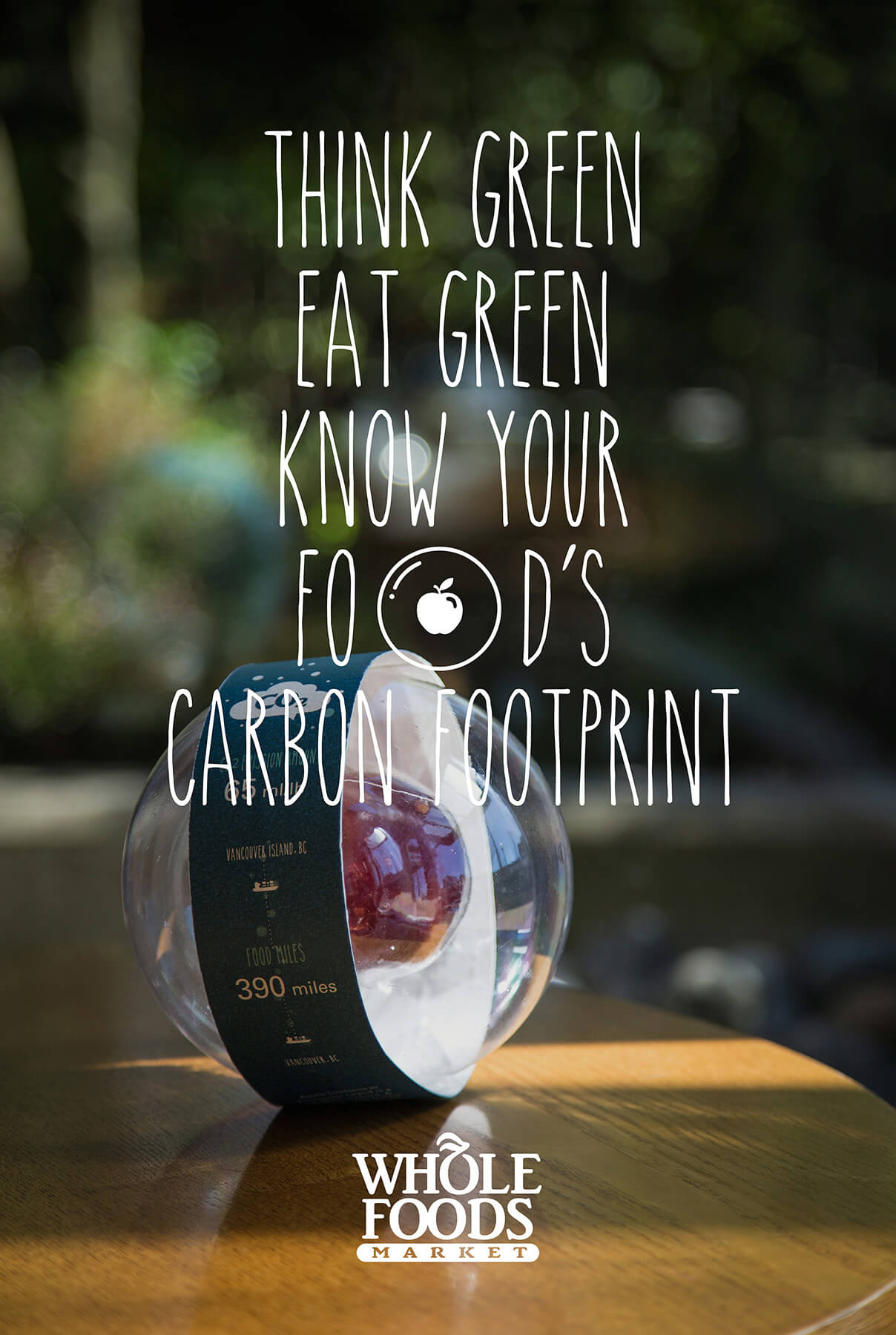
Right now people assume the word 'organic' we see in grocery stores indicates the produce is green. But organic food that are transported from long distance versus locally produced conventional food, which one is more green?
Historically, when obesity became a public concern, it is required to print nutrition information on package to inform and warn people about how much calories they are going to consume. Now, knowing the environment impact of food is a growing trend and people may want to know the amount of CO2 emission of the food they are going to eat.
We calculated the amount of CO2 emission for producing and transporting one pound of the produce. And the amount of air in the package is approximately the same as the amount of CO2 emitted. With our redesign, we encourage people to consider environment margin of food besides nutrition and price when purchasing.
